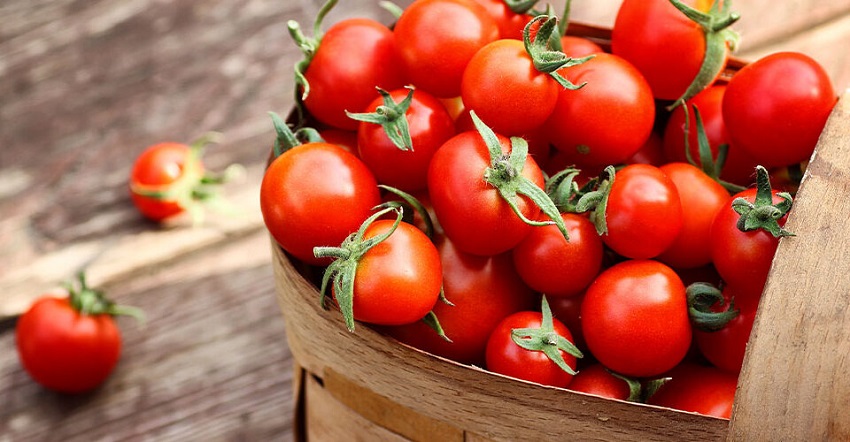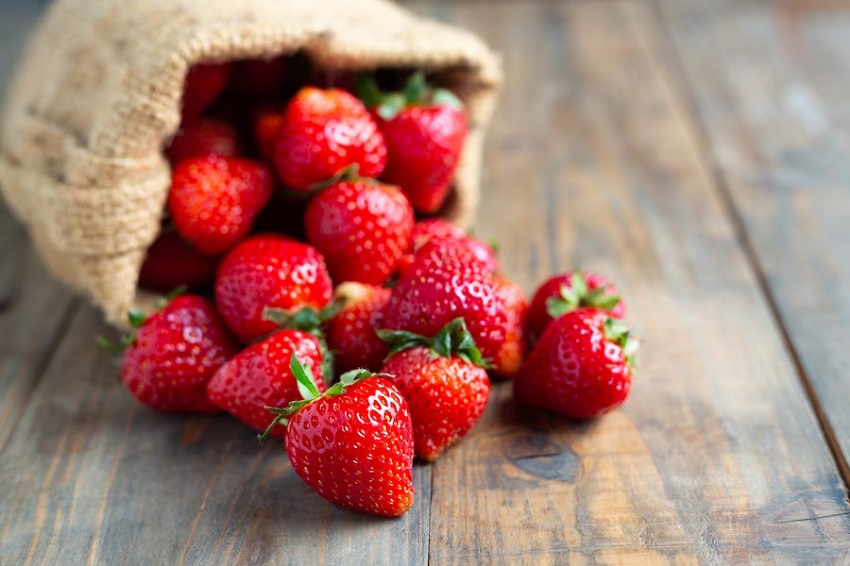Have you ever found yourself captivated by the sight of a bowl filled with an assortment of vivid red fruits? These nature’s gems not only tantalize our taste buds but also offer a plethora of health benefits. From the tangy sweetness of strawberries to the robust flavor of pomegranates, the world of red fruits is a delightful realm to explore. In this article, we’ll take a juicy journey into the realm of 9 red fruits that not only add color to your plate but also bring a burst of nutrients to your body. This article is prepared by Shopomania.net.
Strawberries: Nature’s Heart-Shaped Delight
The typical red fruits of spring, such as the luscious and heart-shaped strawberries, are visually appealing and a rich source of vitamins, minerals, and antioxidants. Their vibrant red hue signifies their high anthocyanin content, contributing to their potent anti-inflammatory properties. Snacking on strawberries can boost your immune system, promote heart health, and even enhance skin radiance.
Cherries: Tart Elegance in Every Bite
Cherries, with their deep red color and sweet-tart flavor, are a true summertime indulgence. Packed with antioxidants like quercetin and anthocyanins, cherries have been linked to reduced inflammation, improved sleep quality, and even relief from muscle soreness. Whether enjoyed fresh or as a pie filling, cherries are a burst of joy for your taste buds.
Apples: Classic Red Goodness
When you think of red fruits, apples might be the first to come to mind. These crunchy delights are rich in dietary fiber, helping with digestion and promoting a feeling of fullness. The red pigment in their skin contains a powerful antioxidant called quercetin, which supports heart health and may have anti-allergic properties.
Raspberries: Tiny, Mighty, and Flavorful
Raspberries are like nature’s candy, with their vibrant color and irresistible sweetness. These berries are loaded with vitamin C, manganese, and dietary fiber. Their unique blend of antioxidants contributes to their potential to fight oxidative stress and reduce the risk of chronic diseases.
Cranberries: Tangy Powerhouse
Cranberries are known for their sharp, tangy flavor that adds a unique twist to various dishes. Rich in proanthocyanidins, cranberries are celebrated for their role in urinary tract health. Additionally, they offer an array of vitamins and minerals, making them a valuable addition to your diet.
Watermelon: Summertime Refreshment
Watermelon, with its juicy and refreshing nature, is a favorite during hot summer days. This hydrating fruit is not only low in calories but also a great source of lycopene—a potent antioxidant associated with reduced risk of certain cancers and heart diseases. Its natural sweetness makes it a guilt-free pleasure.
I think you would like this: Foods to avoid with breast cancer
Red Grapes: Sweetness in Every Cluster
Red grapes, whether enjoyed as a snack or transformed into wine, boast an array of health benefits. Resveratrol, found in grape skins, has been linked to improved heart health and longevity. The natural sugars in grapes provide a quick energy boost, making them a perfect on-the-go snack.
Pomegranates: Jewels of Antioxidants
Pomegranates, with their jewel-like arils, are a symbol of abundance and vitality. Packed with antioxidants, pomegranates are believed to have anti-inflammatory and anti-cancer properties. Their juicy seeds are not only a treat for your taste buds but also a boon for your overall health.
Tomatoes: A Culinary Marvel
While often mistaken for vegetables, tomatoes are technically fruits and an essential part of many cuisines. The red pigment in tomatoes comes from lycopene, which has been associated with a reduced risk of heart disease and certain cancers. These versatile fruits can be enjoyed in salads, sauces, and countless other dishes.
Conclusion
In this journey through the world of 9 red fruits, we’ve discovered a spectrum of flavors, textures, and nutritional benefits that each of these fruits brings to the table. From the sweet succulence of strawberries to the tangy burst of cranberries, these red fruits are more than just ingredients—they’re nature’s way of offering us a palette of colors and flavors that enhance our well-being.
FAQs
Are red fruits higher in antioxidants?
Absolutely! The vibrant red color of these fruits often signifies the presence of potent antioxidants, which help combat oxidative stress in the body.
Can I consume these fruits if I have diabetes?
Yes, many of these fruits can be consumed in moderation as part of a balanced diet for people with diabetes. However, it’s always best to consult a healthcare professional for personalized advice.
Are the health benefits the same for fresh and processed red fruits?
While fresh fruits retain most of their nutrients, some processing methods might lead to a reduction in certain vitamins and antioxidants. Opt for minimally processed options when possible.
Can children enjoy these red fruits too?
Absolutely! Red fruits are a delightful way to introduce children to the world of healthy eating. Their vibrant colors and natural sweetness are often appealing to kids.
How can I incorporate these red fruits into my diet?
There are endless ways to enjoy red fruits. You can add them to smoothies, toss them in salads, make sauces, or simply enjoy them as a wholesome snack.





